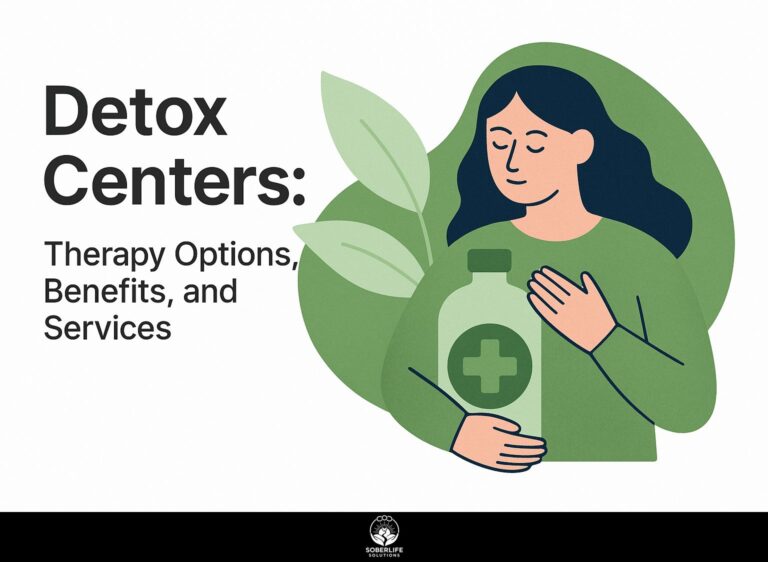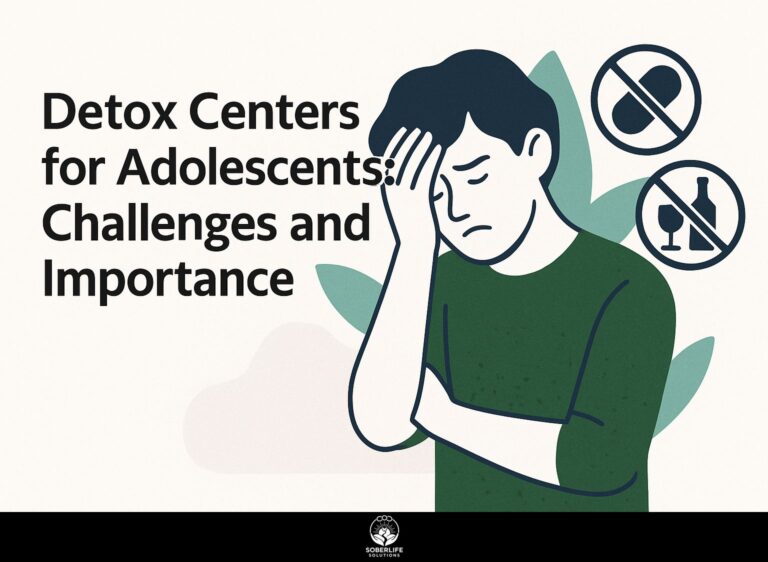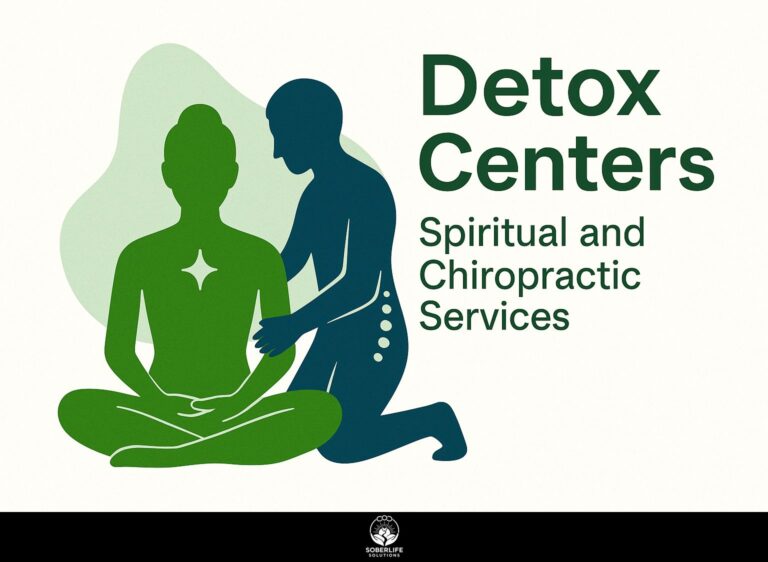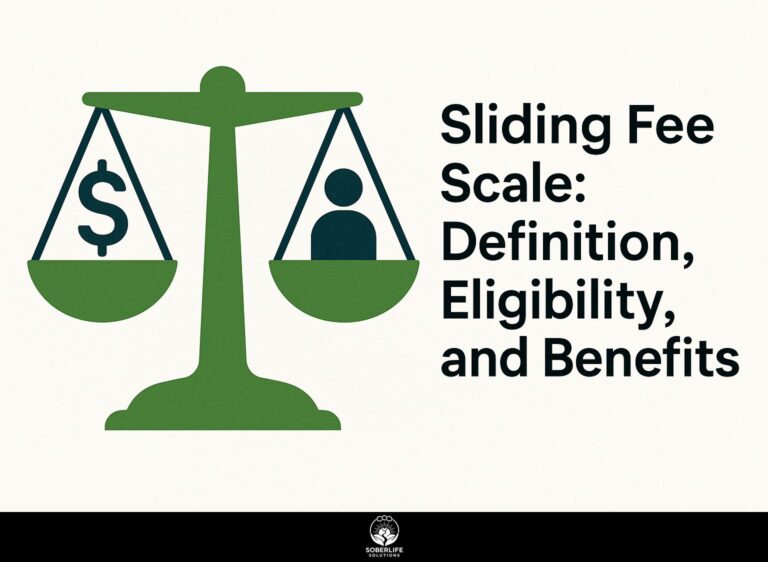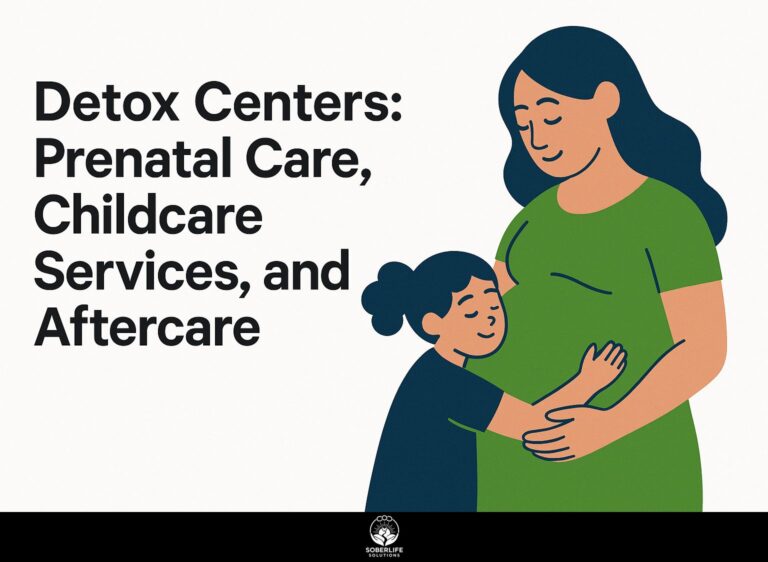Medically Monitored Detox: Definition, Process, and Benefits
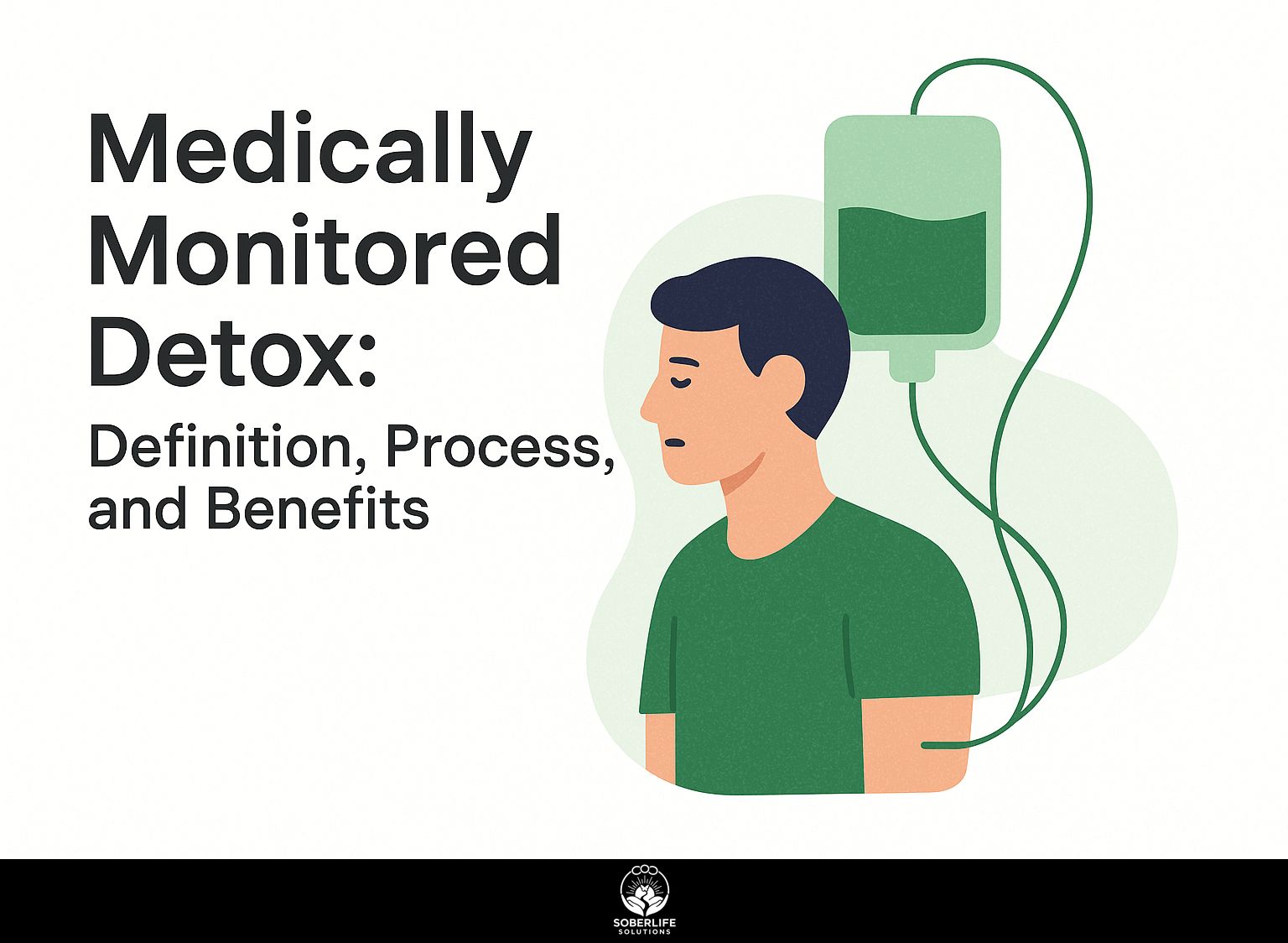
Introduction to Medically Monitored Detox
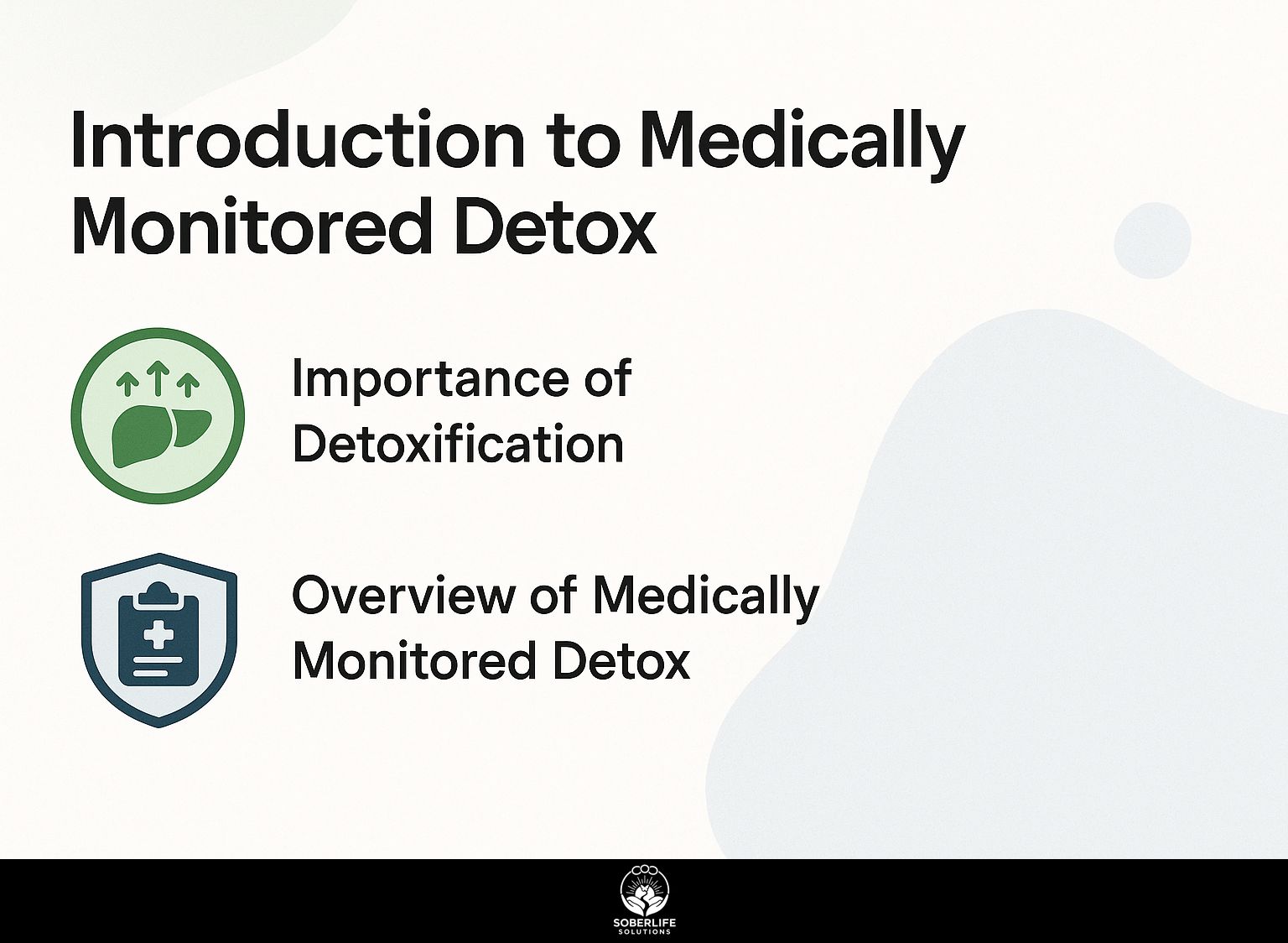
When dealing with substance use problems, going through a detox with medical supervision can be an important initial step. At Evoke Wellness in Grand Junction, experts like Jessica Sherer guide individuals through the detox process, ensuring safety and support while managing withdrawal symptoms. This article covers the meaning, key steps, and major advantages of medically supervised detox, helping you make well-informed choices for better health.
Key Takeaways:
Importance of Detoxification
Removing harmful substances from the body is important in dealing with substance use disorders because it clears toxins and helps control withdrawal symptoms.
During detox, people might face different withdrawal symptoms like anxiety, nausea, trembling, or trouble sleeping, depending on the substance.
Medical supervision is essential because it provides a safe setting where healthcare professionals watch for symptoms and give necessary treatments, like medication to relieve discomfort or lower the chances of complications.
Facilities use tools like withdrawal assessment scales to develop detox plans that prioritize safety and are effective, offering customized care during recovery.
Overview of Medically Monitored Detox
Medically supervised detox includes a planned program run by healthcare providers who watch over the withdrawal process to keep patients safe.
Typically, this process includes continuous supervision by healthcare providers, such as doctors, nurses, and addiction specialists.
Patients have an individual evaluation to customize the detox plan to fit their particular needs. The program may range from 5 to 14 days, depending on substance use and individual health.
During detox, professionals check important health indicators and treat withdrawal symptoms with the right medications to keep you safe and comfortable.
Regular check-ins and counseling sessions are also integral to address psychological support, laying a foundation for ongoing treatment.
Definition of Medically Monitored Detox
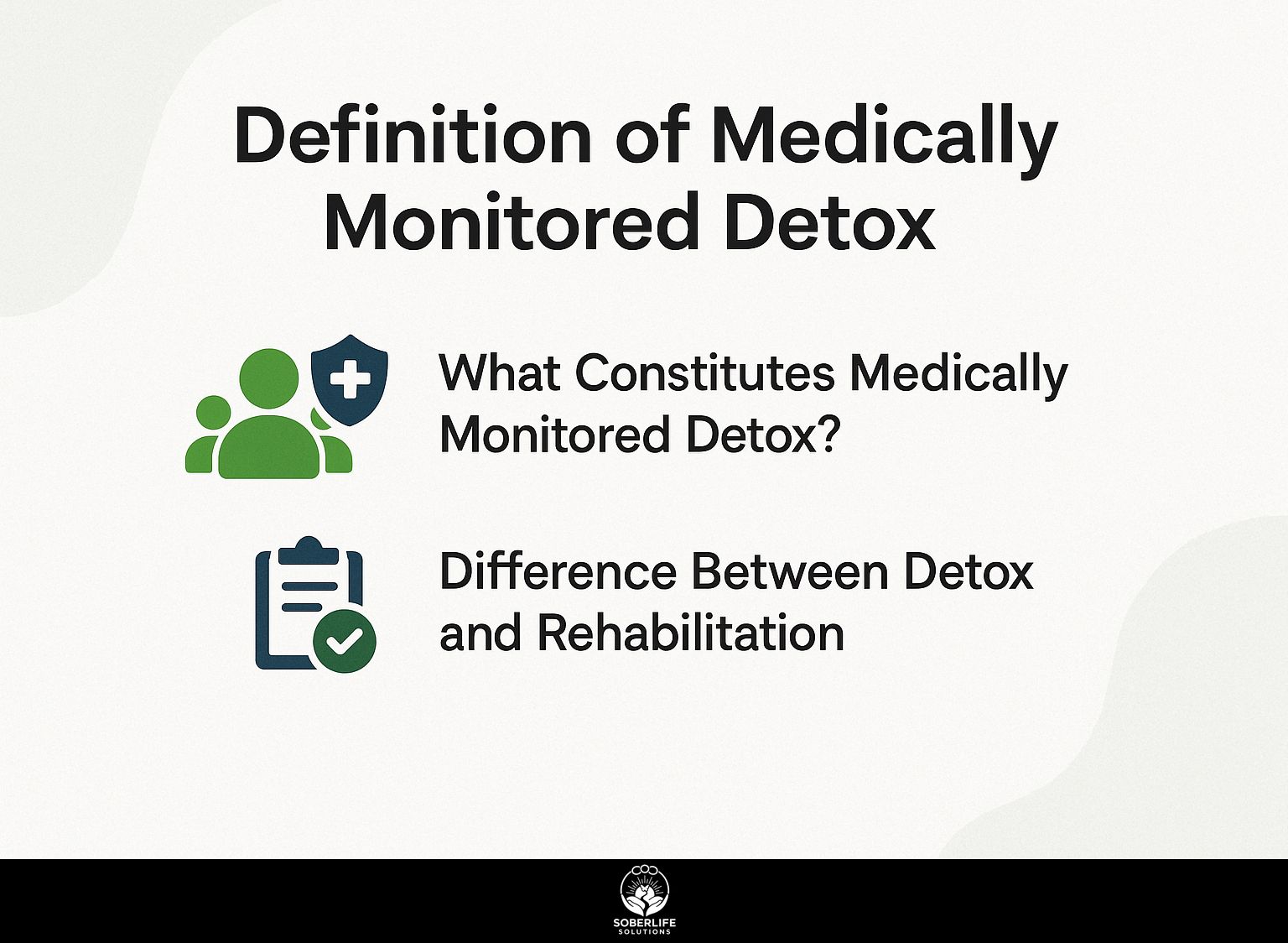
Medically monitored detox is a supervised method for safely and comfortably stopping substance use, with help from professionals.
What Constitutes Medically Monitored Detox?
Key parts of medically supervised detox include health check-ups, custom treatment plans, and regular check-ins during the withdrawal process.
The medical assessments typically include physical exams, psychological evaluations, and substance use history to identify the specific needs of the patient.
Personal care plans are made from these assessments, considering the type of substance used and the intensity of withdrawal symptoms.
Regular evaluations are important. They help healthcare providers change treatment plans when necessary, like adding medications for symptom relief or therapy sessions to address underlying issues.
This customized approach offers a more efficient and secure detox process.
Difference Between Detox and Rehabilitation
While detox focuses on safely managing withdrawal, rehabilitation addresses the psychological and behavioral aspects of substance dependence.
Detoxification is a critical first step, helping individuals through the uncomfortable withdrawal symptoms associated with substance cessation, often requiring 3 to 10 days depending on the substance.
Following detox, rehabilitation provides therapy and support to modify harmful behaviors. For those interested in a comprehensive overview of effective rehabilitation interventions, ScienceDirect offers recommended reading that delves into various techniques and participation outcomes.
Techniques commonly employed include:
- Cognitive-behavioral therapy (CBT) to change thought patterns,
- Motivational interviewing to strengthen commitment,
- Group therapy for peer support.
Using both methods helps people move beyond physical addiction and gain the skills necessary for lasting recovery. Both steps are important in getting better; see also Peer Support in Detox Centers: Definition, Role, and Impact for more insights into the crucial role peer support plays during detoxification.
The Detox Process
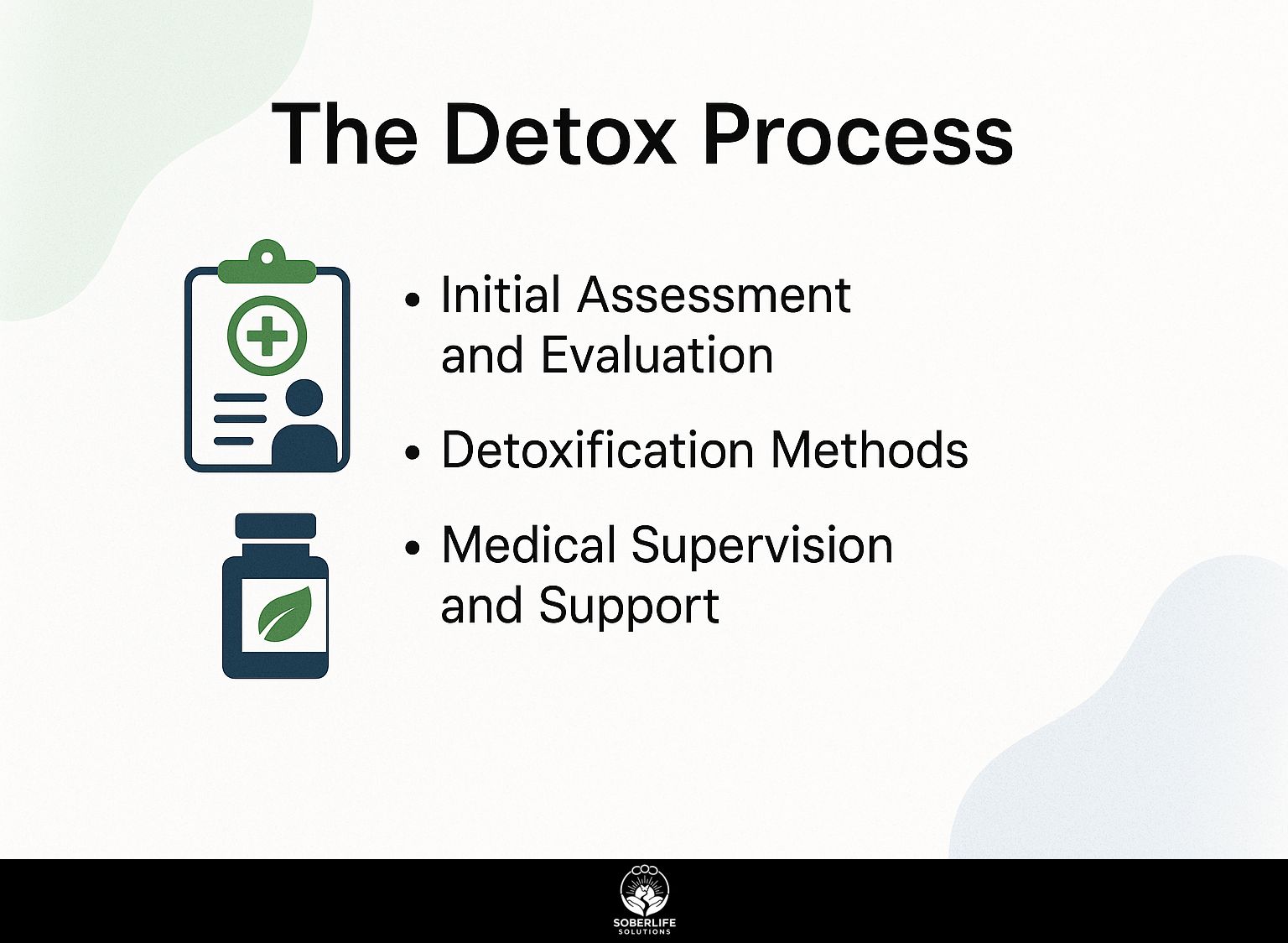
The detox process has a clear plan with several key steps. It begins with first evaluations and proceeds through different detox methods.
Initial Assessment and Evaluation
The initial assessment in the detox process involves evaluating both physical health and psychological symptoms to tailor the treatment plan accordingly.
Doctors usually perform various checks, such as urine tests to find harmful substances, physical exams to look for harm or unusual conditions, and mental health evaluations to assess emotional health.
For example, a urine test can show if drugs are present, while a mental health questionnaire might find hidden anxiety or depression problems.
This approach tailors detox methods to focus on both physical and mental aspects, improving recovery results.
By using this information, healthcare providers can develop a complete and effective detox plan customized for each person.
Detoxification Methods
Common ways to detox include using medications and overall health methods, customized to suit each person’s needs and the substances involved.
Medication treatment often includes drugs such as methadone or buprenorphine, which help control withdrawal symptoms from opioids. This method is effective for those facing opioid dependence, promoting stability and preventing relapse.
In contrast, whole-body methods focus on natural healing, using techniques like acupuncture, yoga, and nutritional therapy. Acupuncture might help lower cravings and anxiety, and eating a balanced diet can improve general health. Recent analysis from JAMA Network suggests that whole-body methods might be beneficial in addressing psychological aspects of detox, offering a holistic approach to recovery.
Each method addresses specific challenges, allowing individuals to choose a path aligned with their recovery goals and personal preferences. For a deeper understanding of these various approaches, you can explore our [comprehensive guide on detoxification stages](https://soberlifesolutions.com/detoxification-key-stages/) that explains what to expect and how to prepare.
Medical Supervision and Support
Having medical staff present during detox helps control withdrawal symptoms and offers emotional help and treatment when necessary.
Having qualified staff is important for monitoring patients around the clock. They can quickly handle any urgent medical problems or severe symptoms that may occur. This constant vigilance helps prevent complications, such as dehydration or seizures, which can occur during withdrawal.
Emotional support is important; trained counselors lead group therapy sessions, helping people talk about their experiences and create a sense of community.
Using methods like cognitive behavioral therapy (CBT) can help people manage challenges more effectively, making detoxification simpler and reducing the likelihood of relapse after treatment.
Benefits of Medically Monitored Detox
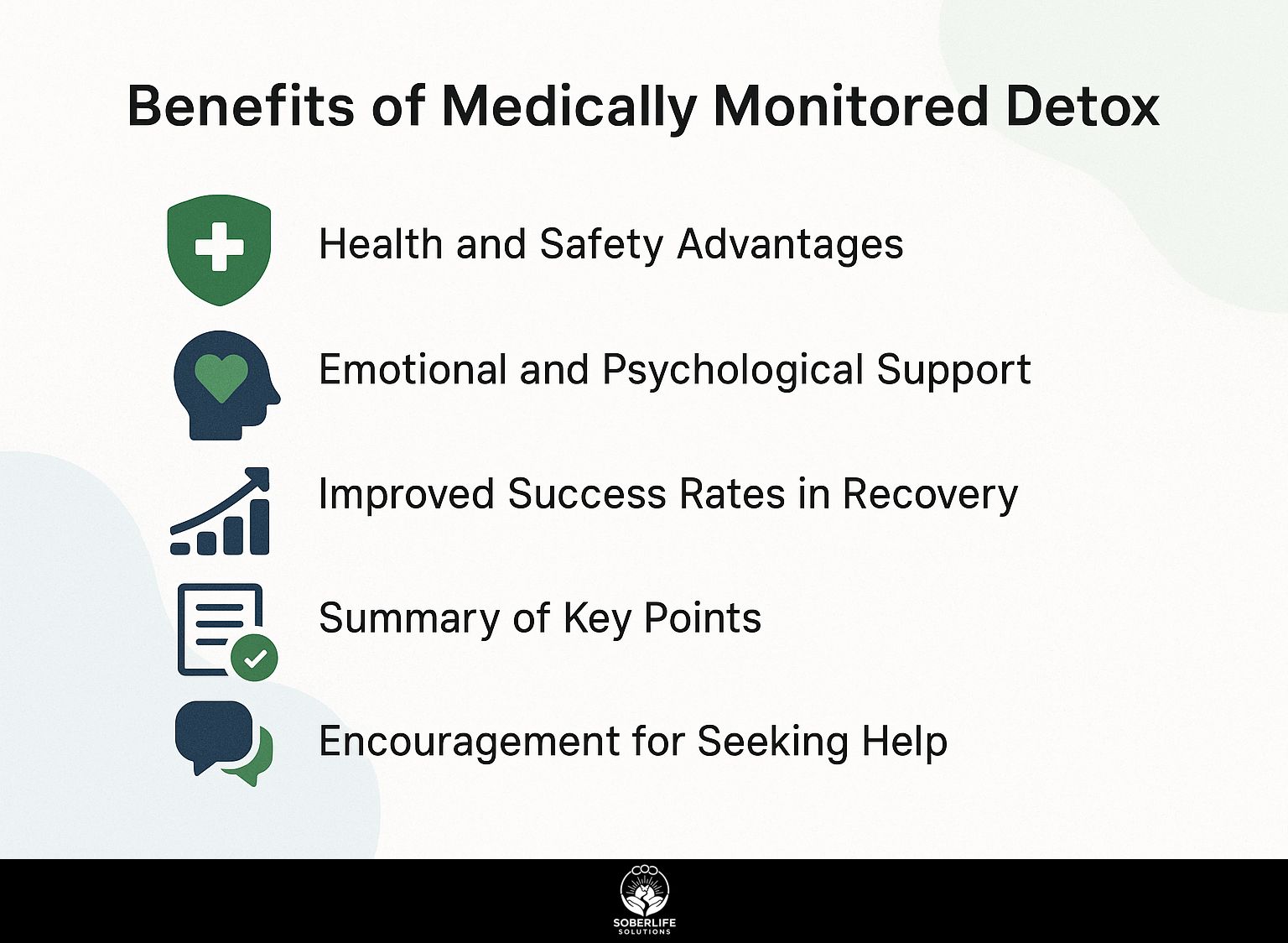
Detox with medical supervision provides important benefits, such as better health results and increased emotional help during the withdrawal stage.
Health and Safety Advantages
One of the primary advantages of medically monitored detox is the reduction of health risks associated with acute withdrawal through continuous safety monitoring.
This monitoring significantly improves patient outcomes. Studies show that people who visit the doctor regularly are 60% less likely to develop serious conditions, such as seizures or heart problems.
The presence of medical staff allows for immediate intervention, which can be life-saving. Detox programs often use equipment like telemetry to monitor important signs instantly and software to log symptoms and medications, as highlighted in a recent study by ScienceDirect.
By closely monitoring patients, facilities can adjust care plans in real-time, creating a safer and more supportive environment for recovery. Curious about how detox center management impacts patient care? Understanding the meticulous processes in case management and medication services can further enhance these outcomes.
Emotional and Psychological Support
The presence of emotional support during detox significantly impacts recovery, addressing psychological symptoms that often accompany withdrawal.
Therapeutic techniques are important for supporting emotional well-being during detox. For instance, Cognitive Behavioral Therapy (CBT) helps individuals understand and reframe negative thought patterns, reducing anxiety and depression.
Methods like meditation and guided imagery can help control cravings and increase self-awareness.
Support groups, such as SMART Recovery or Alcoholics Anonymous, provide a place for people to come together and talk about what they’ve been through and how they manage their challenges.
Using these approaches can build a complete support network, significantly increasing the likelihood of lasting recovery.
Improved Success Rates in Recovery
Studies show that medically monitored detox can lead to a 30% increase in success rates for long-term recovery compared to non-monitored detox methods.
For example, a study published in the Journal of Substance Abuse Treatment found that patients who underwent medically supervised detox had an 80% abstinence rate after six months, whereas those who detoxed at home had only a 50% rate.
This increase can be attributed to continuous medical oversight and the use of medications like buprenorphine, which can reduce withdrawal symptoms. Using regular health checks and personal treatment plans improves patient results, leading to a safer recovery. For more information on effective detox methods, such as the use of buprenorphine, see our detailed article on evidence-based approaches in detox.
Summary of Key Points
Important aspects include the essential part detoxification plays in recovery, the techniques applied, and the benefits of being monitored by medical professionals.
Medically monitored detox is essential as it provides safety during withdrawal, reducing the risk of complications. Most facilities use a mix of drugs, like benzodiazepines for alcohol withdrawal, along with regular medical check-ups.
For instance, the process can involve tapering off substances, ensuring hydration, and managing psychological symptoms with therapy. Having healthcare workers on-site means they can quickly act if serious symptoms appear, greatly improving the chances of recovery.
This structured approach lays a solid foundation for ongoing treatment.
Encouragement for Seeking Help
If you or someone you know is struggling with drug or alcohol use, joining a detox program with medical supervision can be important for health and safety.
Picking the right detox center is very important. Find programs that offer 24/7 medical supervision to keep you safe during withdrawal.
Facilities like BrightQuest or Recovery Centers of America provide custom treatment plans and different support services. Check for accreditation from organizations like the Joint Commission.
Take time to speak with intake coordinators to assess their approach and determine if it aligns with your loved one’s needs. Feel free to ask your doctors or healthcare professionals for recommendations or information to help you.
Frequently Asked Questions
What is medically monitored detox?
Medically monitored detox is a process of removing harmful substances from the body under the supervision and care of medical professionals.
What is the process of medically monitored detox?
The process of medically monitored detox typically involves three stages: evaluation, stabilization, and preparation for further treatment. During the evaluation stage, medical professionals assess the individual’s physical and mental health. In the stabilization stage, medications and other treatments are used to manage withdrawal symptoms. The preparation stage involves creating a plan for ongoing treatment and support.
What are the benefits of medically monitored detox?
Medically supervised detoxification provides benefits such as a secure and caring setting for detox, access to healthcare, and a better chance of reaching lasting recovery.
Who is a good candidate for medically monitored detox?
People who are physically addicted to substances, suffer from intense withdrawal symptoms, have other health issues, or have tried detox before without success should consider a detox program with medical supervision.
Are all substances treated with medically monitored detox?
No, only specific substances, like alcohol, opioids, stimulants, and sedatives, need medically supervised detox because withdrawal symptoms can be very serious and may cause health issues.
Can someone detox on their own without medical supervision?
Do not try detoxing by yourself without a doctor’s guidance, as the withdrawal symptoms can be intense and dangerous. Medically monitored detox provides the necessary support and treatment to manage these symptoms and increase the chances of successful detox and long-term recovery.

